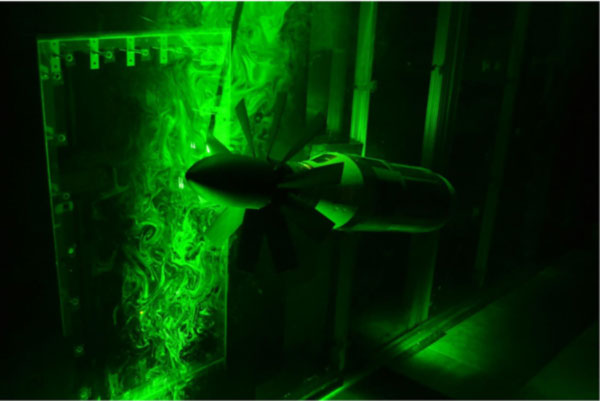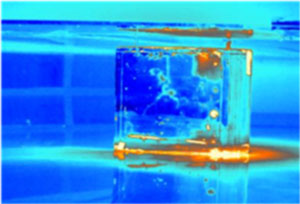Experimental Aeroacoustics Lab
Located in Randolph 4P. Administered by William Devenport and Aurelien Borgoltz

Housed in Randolph 4P, the experimental aeroacoustics lab is home the Advanced Turbulent Flow Research Group. The group, includes Profs. William Devenport, Aurelien Borgoltz, Nanya Intaratep, Nathan Alexander and Dr. Matt Kuester, as well as a cadre of graduate and undergraduate research students.

A significant part of the work conducted in the lab is focussed on the the Virginia Tech Anechoic Wall Jet Wind Tunnel. This facility is the workhorse of a number of our efforts efforts to understand the fundamental physics of noise generation. It produces and extremely quiet flow at speeds of up to 60m/s. The fully developed wall jet flow is accurately characterized and its limited spatial extent allow measurement microphones and spurious scattering edges to be placed outside regions of significant flow velocity. As such it provides an acoustic environment ideally suited to the measurement of boundary layer noise generated by surface imperfections, textures and discontinuities. It has been the focus of long term studies of roughness noise as well as the aeroacoustics of step and gap flows, supported by the Office of Naval Research. Recent work includes research into aeroacoustically quiet surface coverings, and measurements of the acoustic attenuation produced by covering rough surfaces with large open area ratio canopies.

The VT Low-Speed Cascade Wind-Tunnel is also present in the lab. This facility is used for multiple purposes from compressor blade and blade wake research to general use as a test facility for new instrumentation and techniques. One recent research effort was focussed on the development of Infrared imaging for transition detection in low speeds. Initial work on this project (pictured) included documentation of the reflectivity and trasparency of flow flow surfaces for test models placed in the test section. The cascade wind tunnel has a parallel-sided test section terminated at its downstream end by a cascade of GE Rotor B core compressor blades. A moving end-wall system, mounted on the lower wind tunnel wall, allows for the aerodynamics of the blade tips to be studied while simulating the relative motion with a casing that they would experience in actual operation.
Another major function of the lab is its used in developing tests, instrumentation and models that are ultimately used for research and/or testing in the anechoic or aerodynamic test sections of the VT Stability Wind Tunnel. A good example here is the model propulsion rotor (pictured at top) that is currently being used to investigate the aeroacoustics of turbulence ingestion into a rotor at both thrusting conditions (with relevance to propulsion) and breaking conditions (with relevance to wind turbines). This rig, designed to run in the Stability Tunnel anechoic test section was developed in the aeroacoustics lab. Included in this development is instrumentation such as on-blade two-component hot-wire probes. The lab houses many systems for the support of hot-wire anemometry like this, including a jet calibration facility and repair station.


